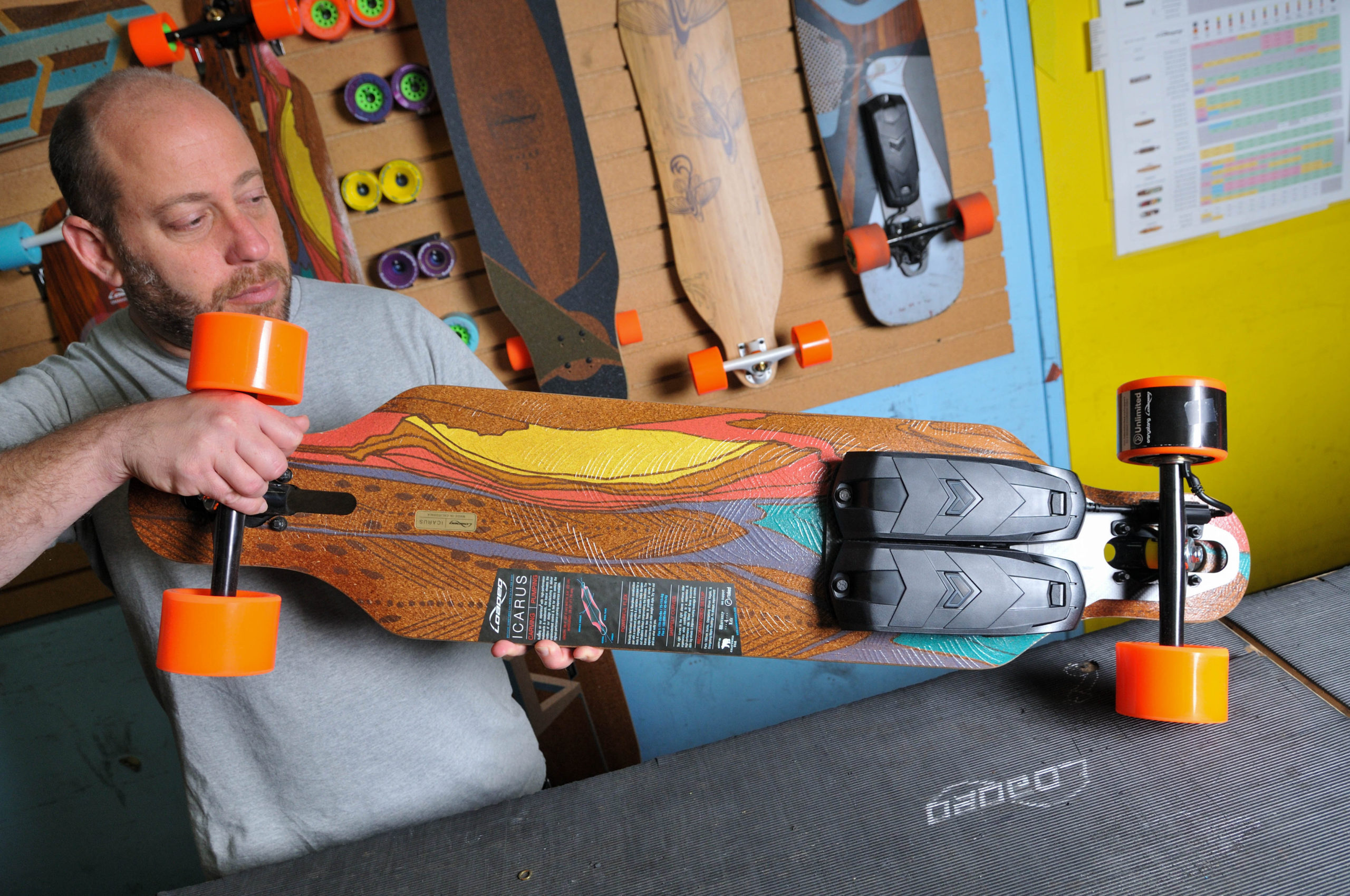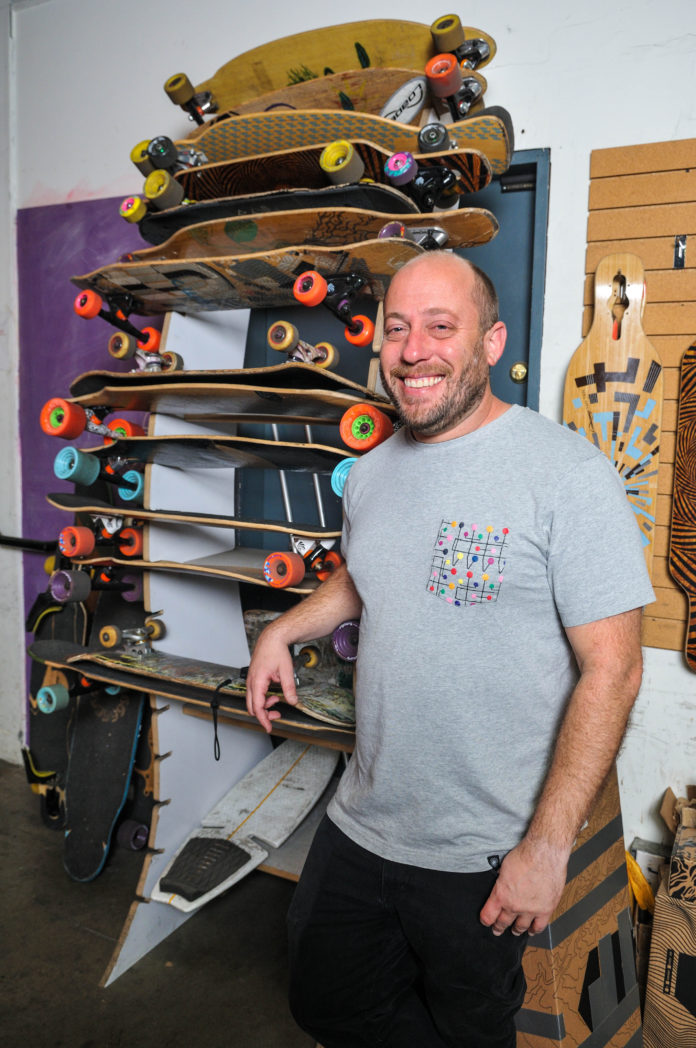What does a young entrepreneur do with an English degree from prestigious Columbia University?
Start a West Coast skateboard business, of course.
During a recent Business Journal visit to the Culver City headquarters of Loaded Boards Inc., Don Tashman, Los Angeles native and founder and chief executive of the company, acknowledged experiencing a skateboard “epiphany” during his college days in Manhattan.
“I spent five years in New York, and I spent most of it building skateboards to get around the city,” Tashman said. He found himself connecting with local skateboard culture, including “weed delivery kids,” a professor and others interested in the skateboard world.
After college, Tashman worked several dot.com jobs before returning to Los Angeles to work for his father’s men’s apparel company. He planned to parlay his love of skateboarding into a skateboard-influenced clothing line.

But “I realized I did not have an interest in fashion. I was interested in functionally driven design and materials,” said Tashman, who cheerfully admitted this day’s wardrobe of a gray T-shirt and black jeans was about as fancy as it gets. “One Friday night with dad, I said, ‘I’ve been building skateboards all my life. Why don’t I build skateboards?’”
Why not, his dad agreed, and lent Tashman space in his company warehouse to try to figure out how to turn his passion into a business. Tashman found himself studying composite materials at Cerritos College as part of his effort to blend creativity with the practical requirements of building the skateboard.
Tashman launched Loaded Boards in 2002 with the company’s first skateboard, the Vanguard. Business partner Pablo Castro joined in 2006. The company produces and sells both parts and assembled longboard skateboards. The newest innovation is an electric, battery-powered skateboard. Its $1,500 price tag is significantly more expensive than one of the company’s regular longboards, which can run from $199 to $350.

The term “longboard” does not refer to a board’s length, Tashman explained, but represents anything beyond the first skateboards of the ’50s and ’60s, which used a flat, inflexible wood plank. Newer boards employ a variety of materials and thicknesses, he said, plus have flex characteristics that allow more dexterity and control in a variety of riding styles.
Tashman is ready to explain every detail of skateboard design, but is less enthusiastic about discussing his personal style, usually jeans and a T-shirt. He was in fact wearing a pretty nifty tee: It is part of Uniqlo Co. Ltd.’s Wearable Eames line of clothing that celebrates the designs of Charles and Ray Eames. But even that choice was made in service to the Board. “They were pioneers in bent wood,” Tashman said. “They were a huge influence on skateboard design.”

Added Tashman, “Our mission is to spread stoke (loose translation: spread joy), using skateboards as a medium. And to do so, we very much focus on building innovative products and creating new genres of skateboarding.
“Every board has new materials. We try very hard to make every board innovative and different from anything else out there.”
See the full executive style photo spread in the March 23, 2020, print edition.

